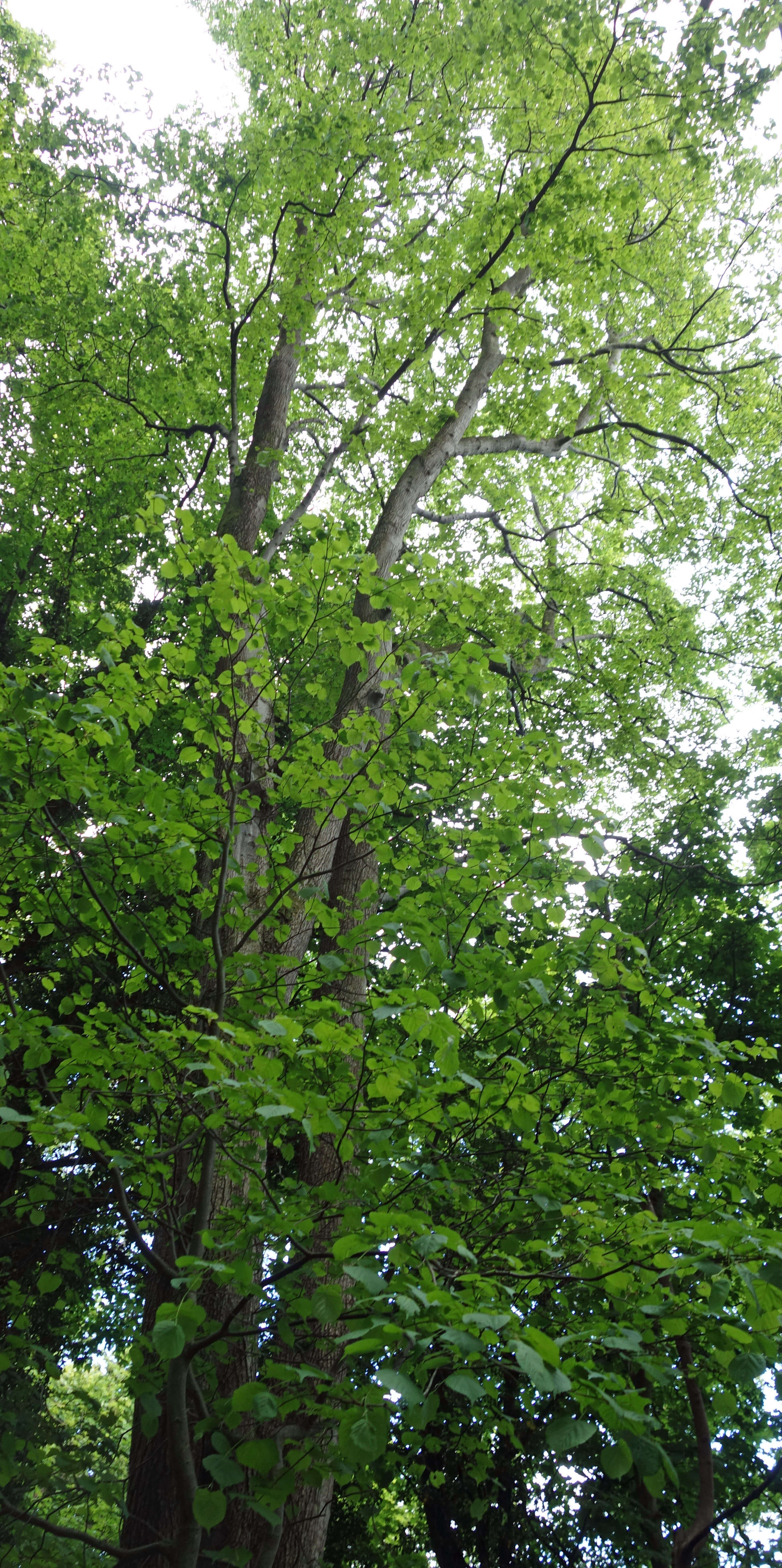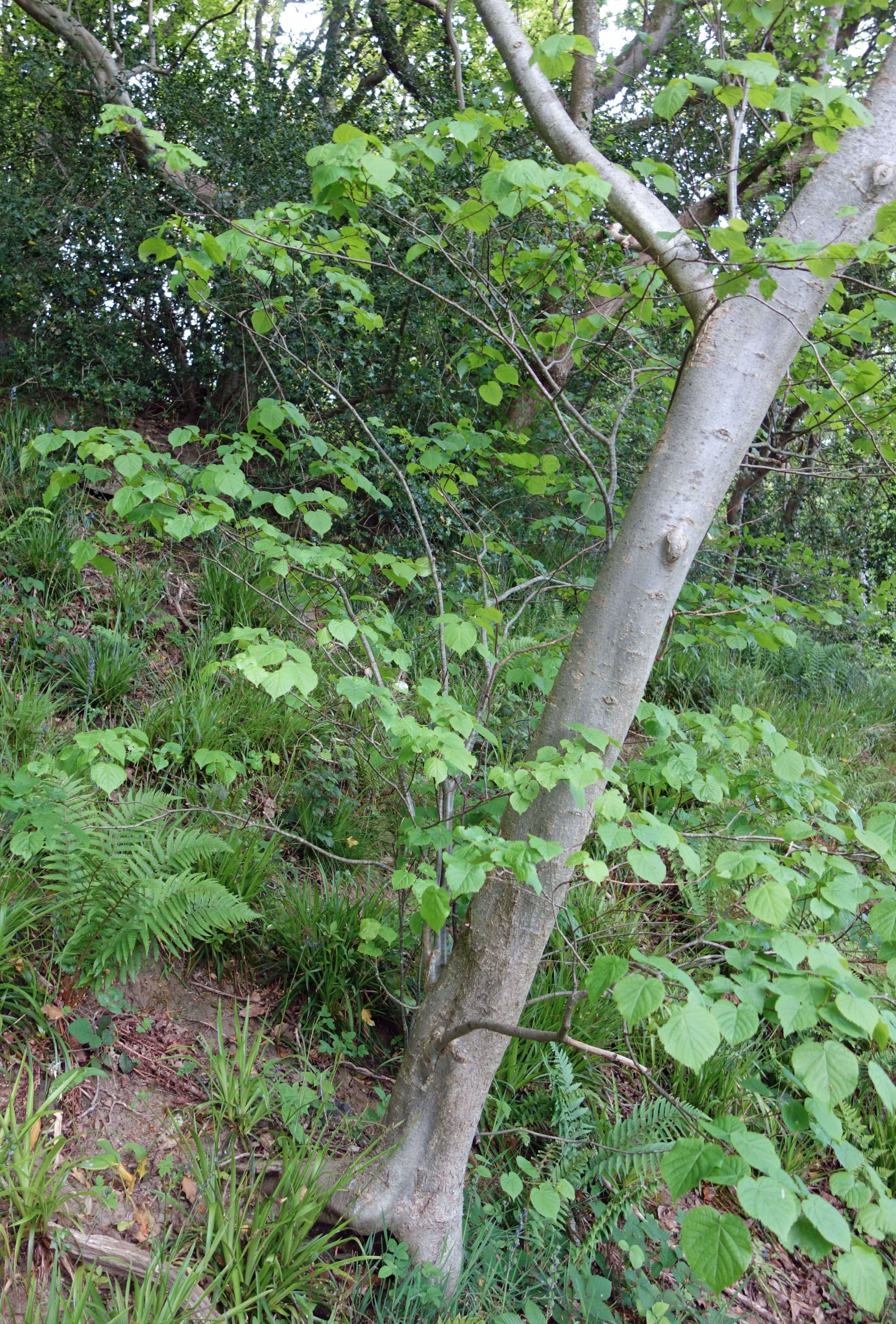
Home
Preamble
Index
Areas
Map
References
Me
Drakkar
Saunterings: Walking in North-West England
Saunterings is a set of reflections based upon walks around the counties of Cumbria, Lancashire and
North Yorkshire in North-West England
(as defined in the Preamble).
Here is a list of all Saunterings so far.
If you'd like to give a comment, correction or update (all are very welcome) or to
be notified by email when a new item is posted - please send an email to johnselfdrakkar@gmail.com.
This is one of several relatively short items about local walks during the first
coronavirus lockdown, April - May 2020.
92. The Small-Leaved Limes of Aughton Woods
Interpreting the mixed messages from government ministers is like what used to be called Chinese Whispers
but probably shouldn’t nowadays. Even the guidelines for going for a walk are confusing. We should
continue to stay at home and avoid unnecessary travel – but we can go out for exercise as many times
as we like and we can drive somewhere for a walk. However, people who live where we might like to drive
don’t want us there – and the Mountain Rescue teams certainly don’t want us on the fells. So my
interpretation today (May 14th) is that a walk may be of unlimited length (perhaps that was always the case?)
and should be where physical
distancing is possible. If I really must drive somewhere to walk then I should find somewhere remote to park and walk. At the moment, I don’t feel a need to drive anywhere: I am content with walks from home, perhaps longer than before.
 Yesterday we chatted to two men who were removing a couple of large trees that had fallen from Lawson’s Wood
into the river, a legacy, no doubt, of the erosion caused by Storm Desmond in December 2015. The trees were
small-leaved limes. That is a particular shame because small-leaved limes are the star trees of Lawson’s Wood.
Perhaps some small-leaved limes were also lost in the adjacent landslip caused by Desmond. We thought we’d better go to see some of those remaining before they too fell in the river.
Yesterday we chatted to two men who were removing a couple of large trees that had fallen from Lawson’s Wood
into the river, a legacy, no doubt, of the erosion caused by Storm Desmond in December 2015. The trees were
small-leaved limes. That is a particular shame because small-leaved limes are the star trees of Lawson’s Wood.
Perhaps some small-leaved limes were also lost in the adjacent landslip caused by Desmond. We thought we’d better go to see some of those remaining before they too fell in the river.
 The series of adjacent woods on the north bank of the Lune form one of the largest areas of
ancient woodland in Lancashire. Different subsets of the woods form a Site of Special
Scientific Interest, a Nature Reserve, and a Biological Heritage Site. I think of the
whole set as Aughton Woods since Aughton, with a name derived from the old English
for oak, deserves some ownership of them.
The series of adjacent woods on the north bank of the Lune form one of the largest areas of
ancient woodland in Lancashire. Different subsets of the woods form a Site of Special
Scientific Interest, a Nature Reserve, and a Biological Heritage Site. I think of the
whole set as Aughton Woods since Aughton, with a name derived from the old English
for oak, deserves some ownership of them.
The small-leaved lime is a native tree, near its northern limits here and hence rather rare in the region. There is also a large-leaved lime (as you might expect) and a common lime, which is a hybrid of the two and is the tallest broad-leaved tree in Britain. Neither are native to this region and therefore if you see a lime-ish tree in Aughton Woods it is probably a small-leaved lime.
I understand that there is a line of small-leaved limes at the boundary between Lawson’s Wood and Burton Wood. However, it is not easy to walk there and we are not supposed to anyway. The only place in Aughton Woods that we can walk is along the footpath in Lawson’s Wood (part of the Lune Valley Ramble) and the permissive path that takes us to Lawson’s Field. So we must hope to spot a small-leaved lime from those paths.
First of all we must bear in mind that the ‘small’ refers to the leaves, not the trees. The leaves of small-leaved lime are about 7cm across, dark green, heart-shaped, with a pointed tip and finely-toothed edge. Limes are tall and imposing trees, often planted to create an impressive avenue. That stature is not so easy to appreciate when the limes are surrounded by other trees in a woodland. In compensation for its small leaves the small-leaved lime has a lot of them – but unfortunately most are high above. Basically, then, we are looking for a large tree with many small leaves in its canopy.
Here is my step-by-step guide for finding a small-leaved lime in Lawson’s Wood: Enter the wood from the
Waterworks Bridge, follow the Lune Valley Ramble path and walk to the fourth wooden footbridge (this is
about 100 metres before the signpost for the permissive path up the wood). Look for a large, dark, somewhat
cracked trunk (shown left) five metres ahead on the river-side, just past a small beech and hazel. Look aloft. There should be lots of little leaves. The heart shape should be detectable, especially with binoculars. If this tree is not a small-leaved lime then I trust that any arborist reading this will let me know.
If that is considered unconvincing, with the leaves so distant, then walk on past the signpost to
the recent landslip. On the right are four or five trees that are (I believe) small-leaved limes. They are not
as mature as the earlier one and the clusters of heart-shaped leaves are more easily seen. To the left of the
path is a small tree with a smooth, grey bark (shown right). Some of its leaves are at eye-level. If they are still
not convincing then I give up.
These younger limes have the chance to flourish now that their mature neighbours have fallen in the
river. However, they may not have the chance for long. The erosive force of a Storm Desmond flood at this
point of the sharp bend must be enormous. There are now two huge gaps in the bank, and what is left is unprotected
and unstable. The steep slopes above have had their bases cut from under them. Who knows what damage future
floods will cause? Watch those spaces.
Date: May 14th 2020
Start: SD543644, Brookhouse (Map: OL41)
Route: N – Waterworks Bridge – E on Lune Valley Ramble path – signpost
to permissive path, first landslip – and back
Distance: 3 miles; Ascent: 20 metres
Home
Preamble
Index
Areas
Map
References
Me
Drakkar
© John Self, Drakkar Press, 2018-

Top photo: The western Howgills from Dillicar;
Bottom photo: Blencathra from Great Mell Fell


 Yesterday we chatted to two men who were removing a couple of large trees that had fallen from Lawson’s Wood
into the river, a legacy, no doubt, of the erosion caused by Storm Desmond in December 2015. The trees were
small-leaved limes. That is a particular shame because small-leaved limes are the star trees of Lawson’s Wood.
Perhaps some small-leaved limes were also lost in the adjacent landslip caused by Desmond. We thought we’d better go to see some of those remaining before they too fell in the river.
Yesterday we chatted to two men who were removing a couple of large trees that had fallen from Lawson’s Wood
into the river, a legacy, no doubt, of the erosion caused by Storm Desmond in December 2015. The trees were
small-leaved limes. That is a particular shame because small-leaved limes are the star trees of Lawson’s Wood.
Perhaps some small-leaved limes were also lost in the adjacent landslip caused by Desmond. We thought we’d better go to see some of those remaining before they too fell in the river.
 The series of adjacent woods on the north bank of the Lune form one of the largest areas of
ancient woodland in Lancashire. Different subsets of the woods form a Site of Special
Scientific Interest, a Nature Reserve, and a Biological Heritage Site. I think of the
whole set as Aughton Woods since Aughton, with a name derived from the old English
for oak, deserves some ownership of them.
The series of adjacent woods on the north bank of the Lune form one of the largest areas of
ancient woodland in Lancashire. Different subsets of the woods form a Site of Special
Scientific Interest, a Nature Reserve, and a Biological Heritage Site. I think of the
whole set as Aughton Woods since Aughton, with a name derived from the old English
for oak, deserves some ownership of them.
